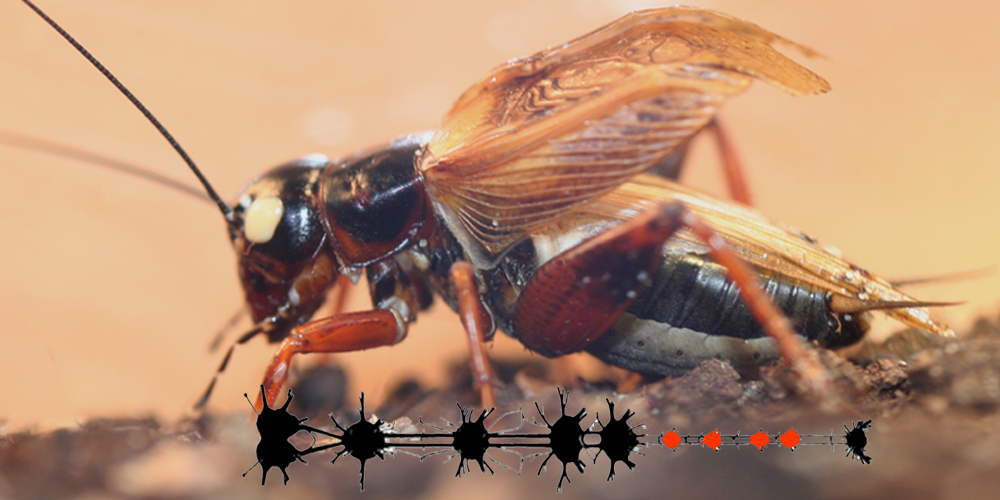Neural Control of Singing
Command Neurons for Singing are Located in the Brain |
We analyse how singing behaviour is controlled by the nervous system. What is the role of the brain and where and how is the rhythmic motor pattern underlying singing generated?
Local electrical or pharmacological stimulation of the grasshopper or cricket brain elicits singing. The brain controls singing via identified command neurons which project towards the thoracic and abdominal ganglia. Stimulating these command neurons with microelectrodes elicits singing whereas inhibiting these neurons blocks it. The command neurons are therefore sufficient and necessary for the control of singing behaviour.
The video shows the normal singing behaviour of a grasshopper and how electrical stimuli applied to the frontal brain elicit singing.
References:
- Hedwig B (2000) Control of cricket stridulation by a command neuron: efficacy depends on behavioural state. J Neurophysiol, 83:712-722
- Wenzel B, Hedwig B (1999) Neurochemical control of cricket stridulation revealed by pharmacological microinjections into the brain. J Exp Biol, 202: 2203-2216
- Hedwig B, Heinrich R (1997) Identified descending brain neurons control different stridulatory motor patterns in an acridid grasshopper J Comp Physiol A, 180:285-29
- Hedwig B, (1994) A descending cephalo-thoracic command system controls stridulation in the acridid grasshopper Omocestus viridulus L. J Neurophysiol, 72:2015-2025
Abdominal Ganglia House the Singing-CPG |
Crickets use the front-wings for sound production. A suggestive assumption had been that the singing-CPG would be located in the 2-nd thoracic ganglion. Using intracellular recordings we explored the singing network and identified the structure and function of CPG interneurons. Surprisingly the singing-CPG is distributed along the abdominal ganglia, which raises the question how this organisation evolved from previous network functions.
When the connectives between the thoracic and abdominal ganglia are cut, males can still raise their wings, but sound production is abolished. Other lesions demonstrate specific functions of the abdominal ganglia.

Singing cricket (top) with central nervous system (bottom), abdominal ganglia housing the singing-CPG are indicated in red.
Videos showing the effect of lesions on cricket singing in Suppl Material of: http://www.sciencedirect.com/science/article/pii/S016643281630225X
Details of the structure and function of CPG interneurons are described in the references.
References:
- Jacob PF and Hedwig B (2016) Acoustic signalling for mate attraction in crickets: Abdominal ganglia control the timing of the calling song pattern. Behavioural Brain Research 309: 1-16, http://dx.doi.org/10.1016/j.bbr.2016.04.025
- Schöneich S and Hedwig B (2012) Cellular basis of singing motor pattern generation in the field cricket (Gryllus bimaculatus deGeer). Brain and Behaviour doi:10.1002/brb3.89; pp:1-19
- Schöneich S and Hedwig B (2011) Neural basis of singing in crickets: central pattern generation in abdominal ganglia. Naturwissenschaften (2011) 98:1069–1073, doi: 10.1007/s00114-011-0857-1
